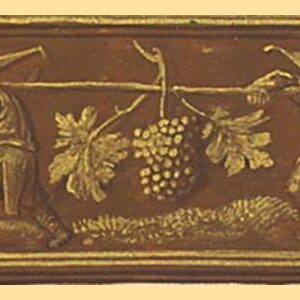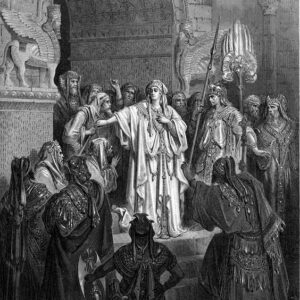Hannah, Thunder, and the Shofar of Rosh Hashanah
As we head into the month of Elul, here are some thoughts on Hannah and Peninna – every year I ponder the Hannah Narrative anew, the haftarah for Rosh Hashanah. Continue reading
Parashat Sh’lach — Caleb: Ruach Acheret and Sacred Norms
Wherever we travel in the Jewish world, we can see the positive effects of efforts to bring human laws, lives, and communities into line with divine standards of justice and loving-kindness. But those who don’t fit communal norms know the downside of this ideal: its tendency to cast an aura of sanctity over flawed and even oppressive social structures and to frame efforts to make communal norms more inclusive as threats to the essence and existence of the community…. The emphasis on sacred normativity in Judaism and the Jewish community harms those, like LGBTQ Jews, who don’t fit established norms. …
Celebrating Diversity – Refashioning our Synagogues and our Minds
Celebrating Diversity – Refashioning our Synagogues and our Minds
A small synagogue that I once belonged to has a ramp, an accessible bathroom, a large print siddur, and a braille siddur especially prepared with the order of service they customarily follow on Friday nights. The ramp was constructed a few years ago with a huge amount of work and good will and fundraising among that community. The accessible bathroom was built as part of a major renovation to the sanctuary a year later. The braille siddur was prepared by a blind woman who visited for a couple of services and offered to make it. The membership committee prepared the large print siddur.
These are all excellent starting places for accommoda
Ruach HaYam: Why We (Still) Need Queer Jewish Space
This essay was first published on September 15, 2017 on the Hadassah-Brandeis Institute Blog
Ruach HaYam: Why We (Still) Need Queer Jewish Space
A few years ago I started a group in Boston aimed at providing space for LGBTQ Jews to gather for learning and worship in a way that would enable us to bring our full selves to the table. We named ourselves Ruach HaYam, Spirit of the Sea, after the sea surrounding us in Boston, and for the sea across which Miriam and Moses led the children of Israel. Ours was not a unique idea at the time, but as we are completing our fifth year at Ruach HaYam, I find it becoming harder, and therefore more essential, to find spiritual community dedicated to queer Jews.
Vayikra: Why Is It Important To Be Called?
Parashat Vayikra, the first portion of the book of Leviticus, is foreign to our modern ears, with its rules for animal sacrifice, detailed requirements for what to do with each type of animal for different offerings, and rules about eating the fat and the blood. How can we understand this ritual? Nancy Jay [see sources at end of paper] points out that the way to understand ritual is not to try and find a meaning identical to the ritual actors, but to build a kind of bridge, “not to accurately decode their meaning, but to make what they do and say intelligible for us.” One way to do this is to consider that the ritual of sacrifice as presented in Leviticus some 2500 year ago is a method of creating a holy routine – instructions about how to bring holiness into our lives through sacred norms. As modern Jews, we don’t bring order through sacrifice, but we do bring order through our own ritual practices.
Although this seems like a satisfying meaning, there is a drawback.
Unrighteous Anger – Queen Vashti and the Erasure of Transgender Women
This article was written by Mischa Haider and Penina Weinberg and was first published in Tikkun Daily Blog on May 13th, 2016.
Image: Queen-Vashti-Refuses-to-Obey-the-Command-of-Ahasvuerus
The night after Purim the two of us sat feasting – a queer Hebrew bible scholar and a trans woman activist. The book of Esther was on our minds, as we read Esther every year on Purim, the festival when we celebrate the brave Jewish queen who saves her people from annihilation in Persia. Also on our minds was the “bathroom panic” gripping the nation over the perilous prospect of transgender women using women’s restrooms.
Elijah in the Desert
I visited the Museum of Fine Arts in Boston to see the painting Elijah in the Desert by Washington Allston. http://www.mfa.org/collections/object/elijah-in-the-desert-30844 A great deal of my time is spent viewing digital photos and images. In fact, I found the image of this painting through a google image search for Elijah. As a small jpg, the picture is stunning enough – a stark portrayal it seems, of Elijah in the throes of despair. I used this image as a banner for a study session I’m leading called “Elijah the Prophet: Zealotry, Despair, and Hearing kol d’mama daka.” By great coincidence, the…
Vashti and Esther in Images
Purim is a time when we remember to think about Esther and perhaps learn to think about Vashti. I present here a small picture gallery. Images have the power to convey ideas very quickly. I hope you will enjoy this visual tour and that this will stimulate thoughts about Esther, Vashti, gender politics, the meaning of Purim, and your own identity. The first image is by Gustav Dore and can be found in digital format in the Pitts Theology Library at Emory University. Notice Vashti’s power, independence and command. She is recognizably a woman, but on her own terms. Now…
Escape to Canada: A Rabbinic Consideration
Headline: Escape plan: How to Move to Canada if the Election Doesn’t Go Your Way A Personal Response with the aid of Rabbinic Tradition Talk about escaping to Canada if one’s preferred candidate does not win the election is plentiful. It has been plentiful before, when George Bush was re-elected, after 9/11 and so on. No doubt escape hatches will be touted again and again. This calls to my mind rabbinic commentary on the story of Elimelech and his wife Naomi. What follows is not a political statement, but a rumination on where the consequences of escape touch upon my…
Ki Tisa as a Song of Longing – Ex 30:11 – 34:35
Parasha Ki Tisa is a Song of both longing and danger. First, the longing. Previous to our parsha, Moses has gone up to the top of Mount Sinai, entering the cloud of God’s presence, to remain with God for 40 days (Ex 24:18). While Moses is up on Mount Sinai encountering the Divine, the children of Israel wait expectantly at the foot of Mount Sinai for Moses to return with God’s prescription for a holy life. Now the period of time is coming to an end and the people are restless, “for this Moshe, the man who brought us up…






